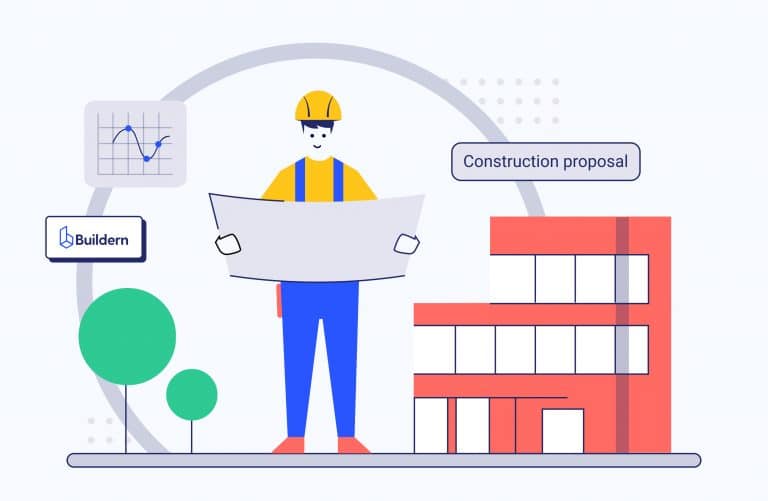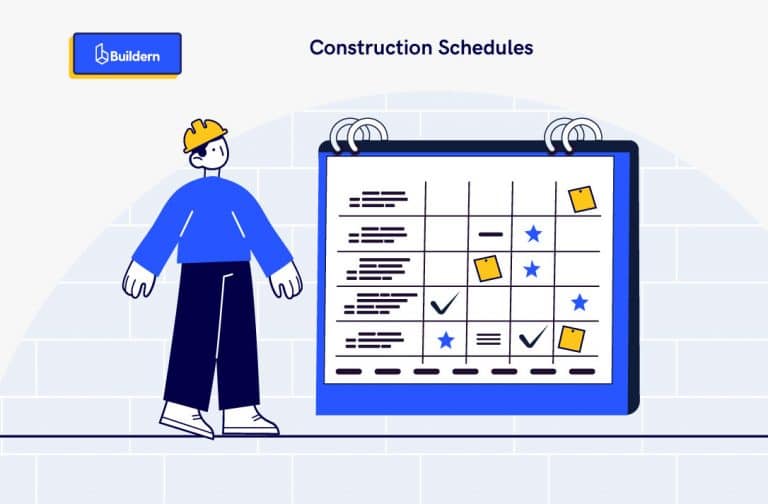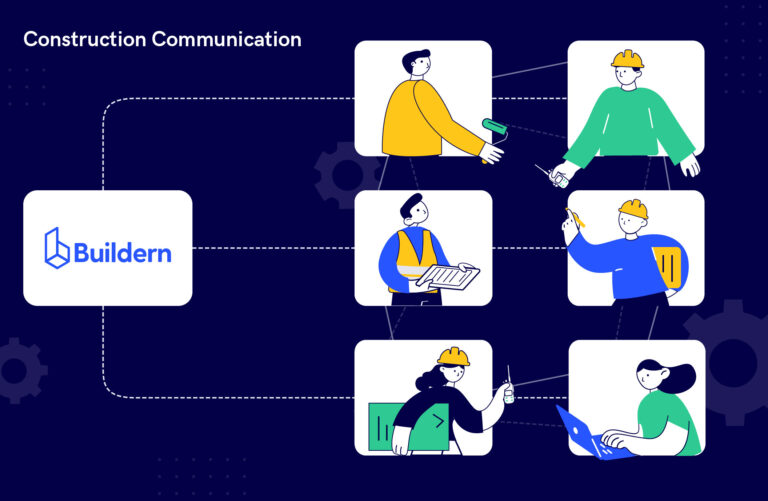8 Construction Subs Management Tips To Improve their Productivity

If you want your construction company to succeed in big projects and meet the expectations of your clients, knowing how to manage your construction subs is a must. The quality of your project largely depends on them, and if you fail to choose the right construction subs and oversee them properly, the construction rework is almost inevitable. But we’re not here to scare you. Instead, we’ve prepared some helpful tips for subcontractor management that will help you get the most from your subcontractors, keep them motivated and witness great results.
However, first, let’s make sure we’re all on the same page:
Who are subcontractors?
In the construction industry, subcontractors are the specialists that execute a specific job, usually in the production system, by supplying materials, equipment, tools, workforce, or designs.
For instance, on residential construction projects, subcontractors are the plumbers, electricians, drywallers, painters, roofers, carpenters, and workers with similar roles.
Who is responsible for subcontractor management?
Most of the time, subcontractors are hired by a general contractor and directly report to him. Subcontractors rarely communicate with clients, as their scope of work is more narrow. So, the ones responsible for the subcontractors’ work are general contractors — they should ensure that the work is being completed on time and with high quality so that the clients are satisfied.
Overall, managing subcontractors is one of the most important aspects of general contractors’ work, as good management is key to the project’s success. Nowadays, there are different ways to manage construction subs, so let’s skim through some of them and discuss the best practices.

8 Tips for Subcontractor management
There are mainly four phases of subcontractor management, which are:
- Pre-award
This is the phase where the company or general contractors identify the subcontractors who can meet the project needs. During this time, they receive bids, quotes, and proposals from different construction subs.
- Award
During this phase, the general contractors outline the contract and set the policies and procedures of subcontractors’ work.
- Post-award
This is the project delivery phase, which involves the general monitoring of the construction project and the ongoing communication between general contractors and subcontractors.
- Closeout
Finally, the closeout phase is when the contractor conducts final works with subcontractors to ensure that all of the subcontractor obligations are completed.
During all of these phases, our management tips will come in handy!
1) Qualify Your Subcontractors
In all construction projects, there are different subcontractors included. So before you hire your construction subs, you need to ensure that they are qualified to perform the required task. If you don’t check it beforehand, you risk hiring a subcontractor who cannot complete the task, which can cause many problems later in the project.
So here is what you should check before hiring your subcontractors:
- Their previous projects
How did they perform during their previous construction projects? Ask them if they had any specific process or work ethics they followed and which were the results. Some subcontractors will have some kind of “portfolio” with pictures and visual proofs of their best works. Of course, it might not always be a good idea to ask a plumber to show a portfolio, but a carpenter might have one and be willing to show it off!
- Feedback from their colleagues
It’s another thing when a person tells you he can do a great job and a completely different thing when his colleague tells you that. Of course, the subcontractor you’re hiring will do his best to get the work, so only trusting his own words is not a good idea. Instead, we recommend asking for feedback from someone he has worked with. They will tell you honestly whether he is qualified for the work or has a lot of room for improvement.

- The licenses and certifications
Each state has different licensing or certification guidelines for construction subs. These certifications usually demand minimum experience requirements and include a written exam in the specified area.
For instance, according to The U.S. Bureau of Labor Statistics (BLS) report, the certificate or license for electricians usually includes having up to 2,000 hours of practical experience and nearly 144 hours of instruction and training program. The electricians who work with high voltage might even be required to pass exams.
In short, confirm your construction subs qualification, along with all the required certificates and licenses, so that he can work on your construction project legally.
- Their safety records
Everyone working in construction knows: the construction field is among the most dangerous workplaces. And although you can do your best to ensure construction site safety, if your subcontractor is not careful enough during his work, he can still cause some significant safety issues, putting himself and other workers at risk.
- Insurance
Do your subcontractors have health and life insurance? If not, make sure you give them proper Workers’ Compensation Insurance, which is mandatory in almost all the states.
If you’re planning to hire subcontractors with whom you’ve already worked before, make sure you check once more that all their licenses and certificates are not expired.
2) Use purpose-built resource management software
As general contractors are directly connected with the subcontractors, they need to have proper construction management software to help them manage the subcontractors’ schedules, labor requests, assignments, and other data. It will be extremely hard to track all of these elements using the paper-based management approach.
For instance, if you want to oversee the fieldwork without going to the construction site, you can ask subcontractors to take photos of the process and attach them to the relevant task. This way, you will be able to check the quality of the work and, when necessary, show the photos as visual proof that the work has been successfully completed to your clients later on.
Good management software will also allow the general contractor and the project manager to quickly and efficiently update the schedule if changes come up. This is especially helpful during big projects when the initial management plan is not rigid and can be modified at any given moment.

3) Have all the contract details documented
Most verbal agreements do not have enough power in front of the court as their written counterparts. So, although you can trust your subcontractor and decide upon the conditions and requirements of the job, you can’t really charge against him if he suddenly disappears in the middle of the project. That’s why having a written document is always a must, and overall it’s beneficial for both parties.
But simply signing a contract, is not it. Try to make it as detailed as possible. If you have any specific expectations and requirements from your subcontractor, state them in the contract. This way, your subcontractors will know exactly what they signed for, and in case they find the work too demanding, they can refuse right from the beginning.
Here too, having management software can come in handy. Especially during the pandemic when it’s a little hard to force your subcontractors to come and sign the agreement on the spot. So, the electronic document can be a perfect solution. With the software, you can send and collect all of your contracts in one place.
4) Set up open communication with subcontractors
By now, you have already understood how big of a role subcontractors play in your construction project. They cover a considerable portion of your work, so you want to make sure there is no miscommunication between you and the subcontractor. And here’s our tip for efficient communication flow: forget about all the emails, calls, and printed documents. Remember the management software we’ve mentioned in our previous points? Well, here is where it’s most useful. With good software, you can:
- Share real-time updates with your subcontractors with cloud-based technology.
- Avoid double-entries and hence prevent unnecessary mistakes in the work process.
- Eliminate the confusion and misunderstanding between the general contractor, project manager, and subcontractors.
In the end, you should be able to build a friendly and long-lasting relationship with your subcontractors, enjoying a conflict-free and smooth workflow.
5) Pay attention to payment terms

Another important thing to consider when managing your subcontractors is the financial aspect. To play it safe, we advise ensuring that the final payment comes with the project deadlines. In other words, you can pay your subcontractors partially at the beginning of the construction project and pay the rest after the work is completed. It is also the safest payment method for the client, especially if you’re working on big, long-term projects where you can confront various problems and expenses throughout the process.
The 50-50 approach is the most common one, but you can also choose to pay the entire money in smaller installments during the entire project. In other words, you can divide your construction project into smaller sections and define certain milestones, by completion of which your subcontractor will be paid a specific percentage of the overall amount.
6) Confirm your end of the agreement
General contractors usually have a lot of power over the subcontractors as, in many cases, subcontractors will be ready to satisfy even the most capricious demands just to make the general contractor happy. However, you don’t want to maintain such a severe power dynamic or, even worse, abuse it. As if you continue to demand too much, your subcontractors can refuse to work with you in the future.
Abusive behavior from the general contractor can also negatively influence the subcontractors by making them act unethical in their own work and towards their colleagues.
And that’s certainly something you want to avoid. So pay your employees on time and create a healthy and happy working environment to preserve good relationships with your subcontractors and keep them satisfied.
7) Use tracking tools
Another great management tip is to use tracking tools. Many construction companies rely on time tracking tools for instance to monitor the ongoing performance of their employees. The time tracking tools help improve the staff scheduling in the future project, manage the construction subs and show the billable hours to your clients.
Hand in hand with the time tracking goes the performance tracking. This one is, in fact, more important in the construction company, as most of the time it’s about the quality of the work completed rather than the time spent on it. With performance tracking tools or features, you can measure your subcontractors’ success and give them constructive feedback based on visual proofs like images or videos.

8) Evaluate the work based on the client feedback and save their contact info
Finally, once the work is completed, evaluate your subcontractors’ overall performance based on your client feedback. Evaluate whether the time spent on the project and the overall quality of the end result were worth the price. If you find that all the set criteria were met, save their contact info. It’s a pity to lose a good subcontractor, so make sure you stay in touch so that you can work with them during future projects too!
Conclusion
Construction subs are among the most important employees of any construction company. And as they are directly reporting to and working with the general contractor, it is the general contractor’s job to oversee the work and ensure everything is being performed as expected. We hope our management tips will help make this process smoother and more efficient, leading to exceptional results!
If you’re working in the construction industry, don’t forget to check some of our other blogs and resources that might be helpful!





